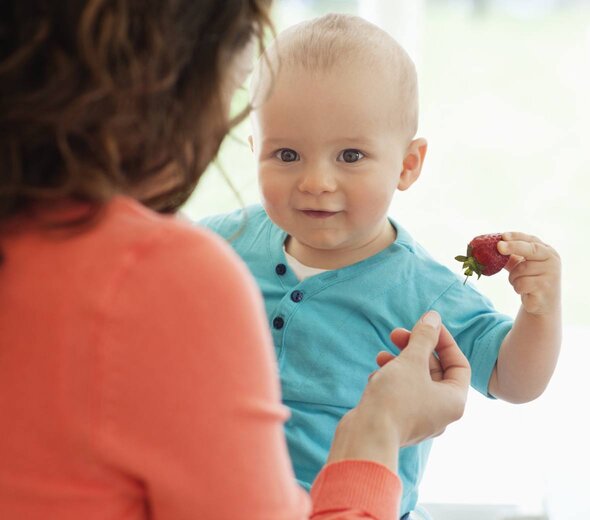

Food allergy is associated with hypersensitivity to specific nutrients. One in ten children has a tendency to allergies, but in many of them it ceases when they reach the age of 2. Small children are often allergic to nuts, chicken protein, strawberries, citrus fruit, gluten contained in wheat products and cow's milk. Children from families in which allergies occur in any of its members, are more at risk. Therefore, make sure what is the situation both in your and your partner's family: whether anyone suffers from airborne allergy, food allergy, asthma, and how this allergy manifests itself (hay fever, rash). It is recommended that children from allergic families are breastfed as long as possible (minimum for 4 months) to get the protective antibodies.
To protect your child from food allergy to specific nutrients introduce new ingredients one by one (e.g. mousse from a single fruit/vegetable) and watch the child's reaction. Avoid giving peanuts to children under 3, as they are the most often cause of an anaphylactic shock.
Food allergy is most often manifested by rash (skin lesions), vomiting, diarrhea, breathing problems, cough, weight or growth inhibition. Sometimes there occurs an allergic reaction called anaphylactic shock, extremely dangerous to the health and life of the child. It can be caused not only by food but also some drugs and insect bites. It manifests itself by strong rash over all body, face and eyelid swelling, breathlessness and even loss of consciousness. If you observe these symptoms, call the ambulance. While waiting for help check child's pulse and respiration. If the child is unconscious, begin resuscitation.